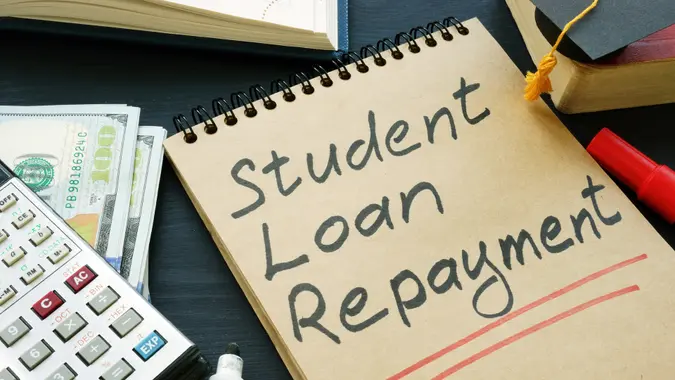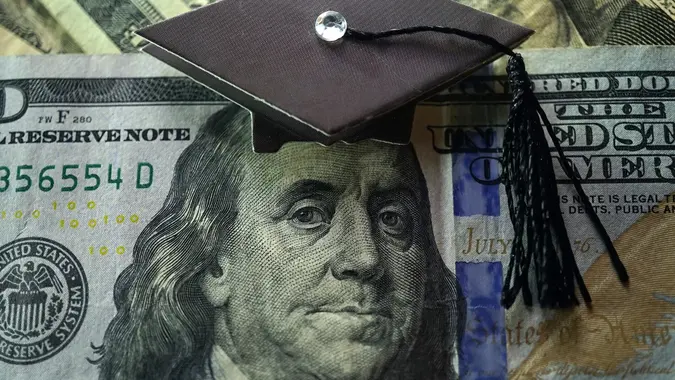Student Loan Forgiveness: Could Biden’s Plan To Lower Payments Lead to Further Debt?

Commitment to Our Readers
GOBankingRates' editorial team is committed to bringing you unbiased reviews and information. We use data-driven methodologies to evaluate financial products and services - our reviews and ratings are not influenced by advertisers. You can read more about our editorial guidelines and our products and services review methodology.

20 Years
Helping You Live Richer

Reviewed
by Experts

Trusted by
Millions of Readers
Although well-intentioned, President Joe Biden’s proposed changes to the income-driven repayment (IDR) plan REPAYE may cause some borrowers to take on more educational debt than they would have previously. The Congressional Budget Office (CBO) recently estimated a 12% increase in student borrowing should the modified plan get implemented.
The CBO acknowledged that it’s challenging to predict borrower behavior in advance, but the federal agency suggests that:
- Current borrowers may take out higher loan amounts because their monthly payments will be lower.
- Previously hesitant students may now borrow funds to cover their education because the loan terms have improved.
- Some colleges and universities may increase their tuition to capitalize on student willingness to assume more debt.
The updated IDR plan will be especially popular with borrowers if the Supreme Court strikes down Biden’s student debt cancellation initiative.
If they can’t get their loans forgiven, borrowers would eagerly take advantage of the updated REPAYE plan, which would:
- Lower their monthly payment from 10% of their discretionary income to 5%
- Increase the amount of income exempt from repayment from 150% of the federal poverty guideline to 225%
- Prevent interest from accruing when their payment doesn’t cover the interest due
- Grant forgiveness in 10 years instead of 20 for undergraduate loan balances of $12,000 or less
The proposed plan may be more costly than anticipated for taxpayers, too. The CBO projects that the new IDR plan’s price tag will be nearly double the initial estimate of $138 billion. Over the next ten years, Americans may foot the staggering bill of $230 billion (or more!).
 Written by
Written by 
























